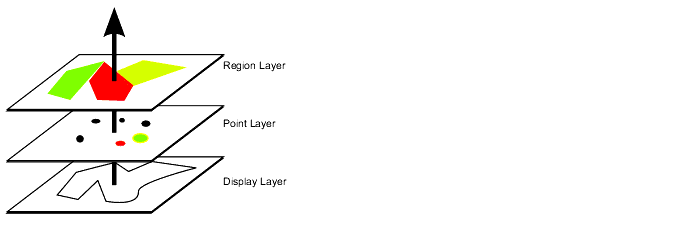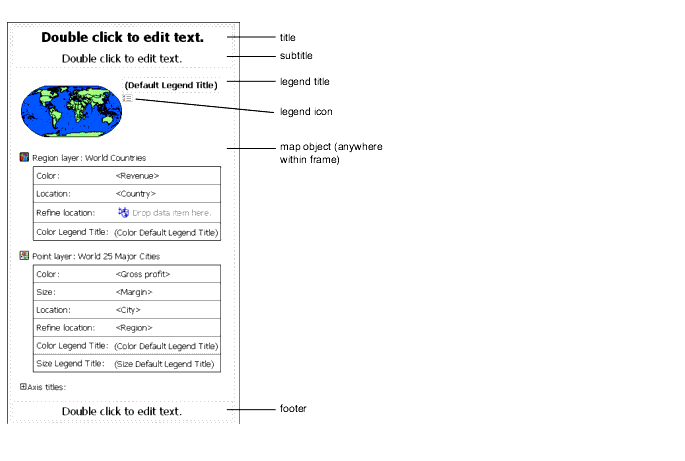
Maps |
Report Studio provides a set of maps that you can use to represent tabular data in a spatial context. For example, on a map of the world, countries can be colored to represent the level of revenue.
Maps are most often used to show geographical areas, but they can be used to show other spatial information, such as a floor plan in a building, seats in an airplane, or parts of the human body.
A map consists of a collection of layers. Each layer contains different information and acts like a transparency that is placed on top of the map. Each layer adds more information to the map. For example a map of the world may contain information related to countries on one layer and information related to cities on another level.

Report Studio maps provide the following three types of layers:
Region layer
Specifies the regions on a map to be differentiated according to values in the data source. For example, to show the revenue level for each country on a map of the world, choose Country as the region layer and then specify that the color of each country is based on the revenue value for that country. Regions can be set up for drilling through to other reports.
Note: If you intend to create CSV or XML output from your map, use only a point layer or a region layer. CSV and XML do not support the simultaneous use of both layers in the same map. Only one layer will be rendered in the output.
The following shows the parts of a map as they appear in the Report Studio interface.

Related Topics: